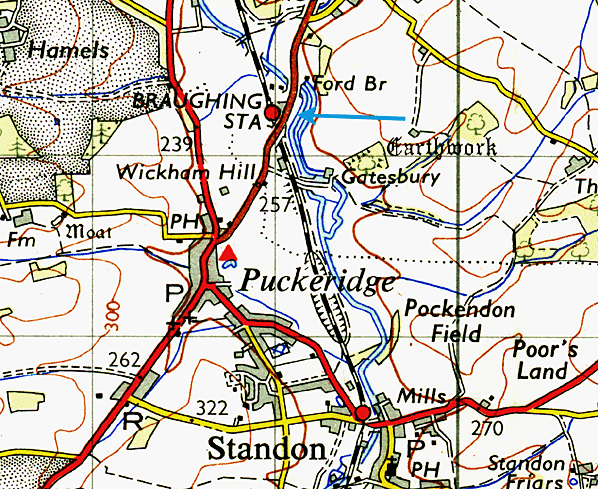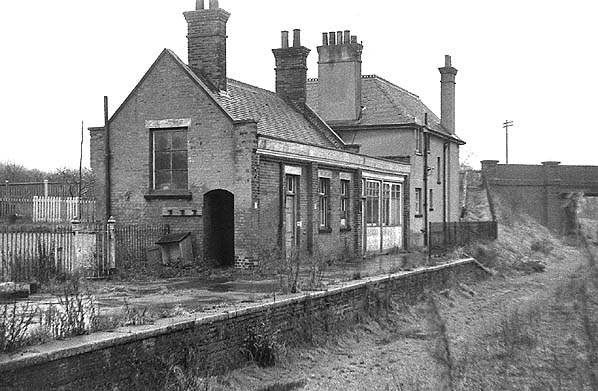|
Notes: Buntingford was one of the many thriving market towns
in East Anglia that was bypassed by chance or design by the main
lines. When a bill to construct a new route between Ware &
Cambridge passing through Buntingford failed, a public meeting
was held on 1st August 1856 in Buntingford to discuss the feasibility
of building a branch line to the town from Hertford or Ware. At
a second meeting later that year a route from the Eastern Counties
Railway's Hertford branch to Buntingford was adopted and an application
was put before parliament on 11th November 1857 for the incorporation
of the Ware, Hadham & Buntingford Railway.
Despite its name, the railway never went to Ware but made its
junction further south at St. Margaret's, after a change to the
original route was made to avoid offending a landowner. Capital
was difficult to raise and there was strong opposition to the
route from landowners particularly at the southern end of the
line. The line had more than its share of troubles; the bridge
at Braughing failed a Board of Trade inspection even before opening
and the contractor used low-grade timber on the bridge at West
Mill, which was completely rotten by 1868. To these troubles was
added the high cost of compensating landowners along the route
and but for aid from the Eastern Counties Railway who invested
£22,000 in the project and later the Great Eastern Railway
(six companies, including the ECR, were incorporated into the
Great Eastern Railway on 7th August 1862) the line would never
have been completed. There was also an added expense with eight
crossings over the rivers Ash & Rib.
Construction started in January 1859 and although beset with
difficulties from the start the thirteen and three quarter mile
branch from St. Margaret's to Buntingford finally opened on 3rd
July 1863 with intermediate stations at Mardock, Widford, Hadham,
Standon, Braughing & West Mill. The branch prospered despite
its troubled birth and traffic increased allowing most of the
line and its stations were rebuilt before the turn of the century.
The growth of the London residential fringe overtook Northeast
Hertfordshire by the 1920's when through trains to Liverpool Street
were run and walkers were encouraged to use the branch with cheap
Sunday tickets. Goods traffic was not so healthy however and the
service of three goods trains a day, operated prior to World War
1, fell to only one except at busy times.
Passenger numbers remained healthy until the mid 1950's, when
car ownership allowed commuters to try Bishop's Stortford and
the Great Northern stations which a much faster service to King's
Cross which was far more convenient for the West End offices.
Few middle-of-the-day trains had more than a handful of passengers
and by November 1960 these were eliminated. The business trains
direct to London ceased and the choice of motoring to a main line
station became more attractive than a DMU with a change to electric
train at St. Margaret's.
The withdrawal of the passenger service was inevitable and closure
of the line was proposed by Dr. Beeching in 1963 with only 2000
passengers a week buying tickets to travel on the line. Despite
spirited public objections and a proposal to reduce costs by introducing
a railbus the line finally closed to passengers on 16th November
1964. A freight service was retained to Hadham, Standon &
Buntingford until 17th September 1965. Barely four months after
the complete closure of the line the track was lifted. A short
section of track at St. Margaret's was retained as a siding serving
a gravel pit until March 1969.
During its life the Buntingford branch was used as a location
for three films, 'Postman's Knock', 'O'Leary Night' and 'Girls
in Arms'
BRAUGHING STATION
Braughing had two platforms with a covered footbridge and a crossover.
The main station buildings were on the up platform with a waiting
shelter and toilet on the down side. There was a signal box at
the northern end of the down platform controlling the second largest
goods yard on the branch with capacity for 50 wagons. A small
siding served a cattle dock while another line served a goods
shed. Goods facilities were withdrawn from the station on 7th
September 1964.
Sources:
- The Buntingford Railway by P. Paye - Oxford Publishing Co.
1980 ISBN 86093 051 3
- Railways of Hertfordshire by F G Cockman
- Forgotten Railway - East Anglia by R S Joby - David &
Charles ISBN 07153 7312 9
See also: Hertfordshire's
lost railways by Keith Scholey ISBN ISBN 1 84033231 X
Buntingford
Railway & Local History Society web site
Buntingford
Branch Line Remembered 88 minute video using amateur film
and still photographs
Buntingford
Brewery and Green Tye Brewery are working together to produce
a range of handcrafted beers to recall the days of the former
Buntingford Branch Line railway. There are eight beers named after
the eight stations on the line.
To see the other
stations on the Buntingford branch click on the station name:
Mardock, Widford,
Hadham, Standon,
West Mill & Buntingford
|

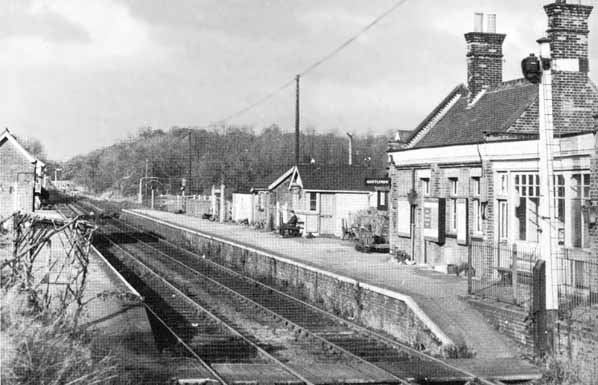
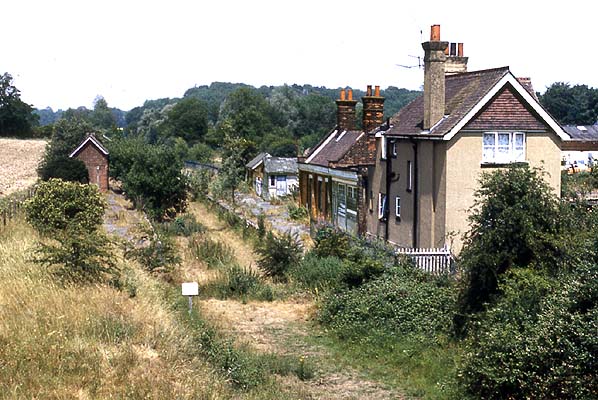
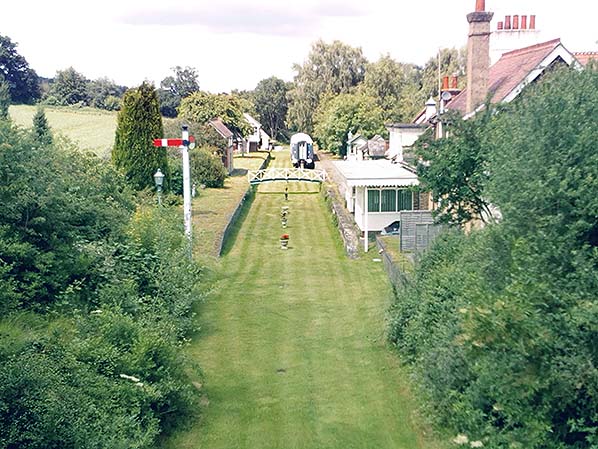
 Home Page
Home Page 